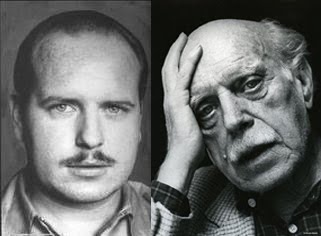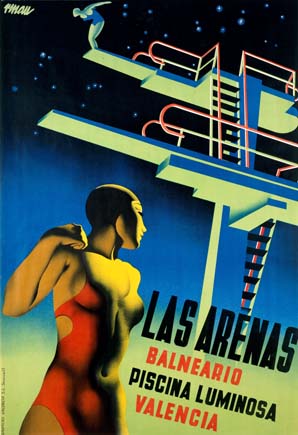An exhibition in September and October 2014 of works by the Valencian artist Josep Renau serves to remind us of this great artist; the man who commissioned Picasso’s Guernica.
Josep Renau was born in Valencia on 17th May 1907. He became famous for being one of the first artists who experimented with photo-montage. He studied painting at the San Carlos School of Fine Arts in Valencia (1919-26), later working in Madrid and Barcelona.
King George V of Britain played a curious role in his choice of profession. As a child Josep liked to collect and organise photographs. One day, seeing two pictures of the King that showed him in very different lights, he became aware, perhaps at a subconscious level, of the propagandistic potential of photography.
In his printmaking, which was influenced by John Heartfield and by Socialist Realism, he showed a strong commitment to the Republican cause and a talent for satire, often expressed through the use of colourful popular imagery.
During the Civil War he was appointed Director General for Fine Arts by the Republican government, and it was he who commissioned Picasso to create a painting for the Spanish Pavilion at the International Exhibition of 1937 in Paris, a painting which turned out to be the famous Guernica.
He was also responsible for organising the transportation of some of the Prado Museum’s collection to safety from National bombing raids.
His first works date from the mid-1920s, when Renau began to make posters and book covers, using the pseudonym Renau Berger.
He joined the Communist Party in 1931, remaining a member until his death in East Germany in 1982.
During the years of the Second Republic, he was active as a graphic designer and editor in several left-wing publications and, from January 1935 to July 1936, was head of the ‘Nueva Cultura’ review in Valencia, which was temporarily the capital of Spain as Franco’s forces advanced on Madrid.
During the same period, Renau designed four covers for the quaintly named ‘Anthology of Conjugal Happiness’, as well as numerous film and advertising posters, including the one he made for Las Arenas Spa, which is now a 5 star hotel and one of Valencia’s most emblematic buildings at the city’s main beach.
He was also Director General of Fine Arts, and Director of the Graphic Propaganda Office of the General Commissariat of the Army Joint Chiefs of Staff at this time.
When the Spanish Civil War ended in 1939 he went into exile in Mexico, where he produced a series of photomontages entitled ‘The American Way of Life (1949-66)’, in which he denounced American imperialism and capitalism. In 1958 he moved permanently to East Berlin, where he executed the series ‘Fata Morgana U.S.A.’


